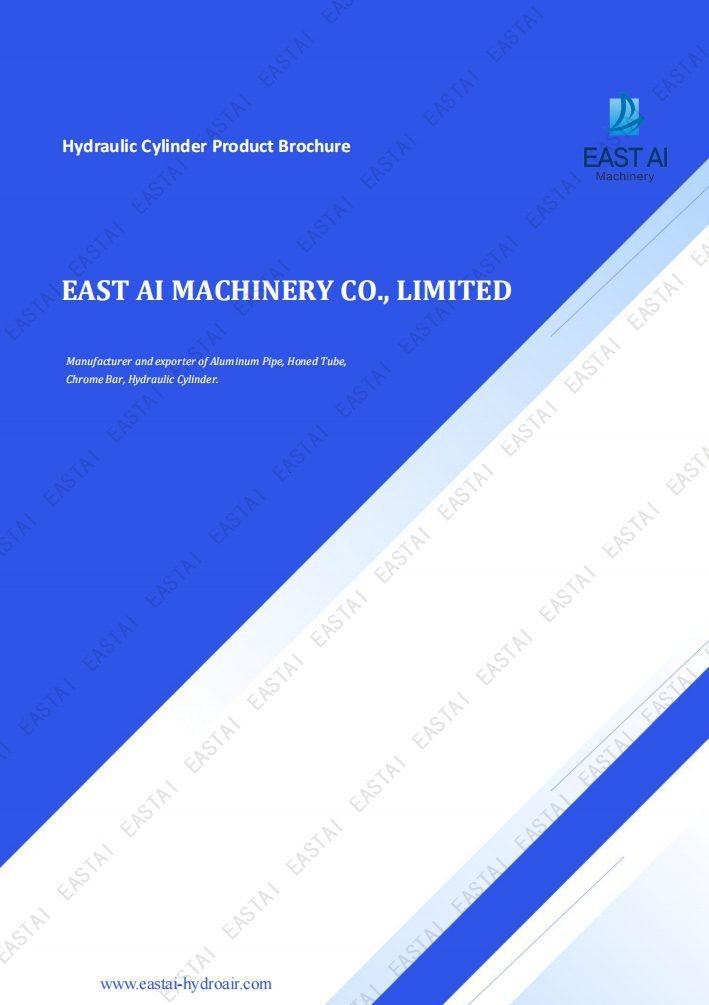Importance of hydraulic cylinders
As a key component in mechanical equipment, hydraulic cylinders are used to assist in lifting, pushing, pulling and supporting equipment. Choosing the right hydraulic cylinder can improve the operating efficiency of the equipment, extend the life of the equipment and reduce costs.
Three reasons to choose the right size hydraulic cylinder
Ensure work efficiency
The size of the hydraulic cylinder has a direct effect on working efficiency. An oversized cylinder may waste energy, while an undersized cylinder may not be able to meet the load requirements of the equipment. Choosing the right size of hydraulic cylinder can ensure efficient operation of the equipment and reduce wasted energy and time.
Extend the life of the equipment
Correctly sizing the hydraulic cylinder can reduce the risk of overloading equipment, thereby reducing the likelihood of equipment failure. This not only improves the stability of the equipment, but also extends its life and reduces maintenance and replacement costs.
Reduce costs
An incorrectly sized hydraulic cylinder can reduce the efficiency of the equipment or even damage the equipment. Choosing the right size hydraulic cylinder can reduce maintenance and replacement costs while improving production efficiency.
Seven Factors to Consider When Selecting Hydraulic Cylinder Size
Application Scenario Requirements
The application scenario determines the size of the hydraulic cylinder.
The role of the hydraulic cylinder (e.g. lifting, pushing, pulling, etc.)
Different tasks require different types of hydraulic cylinders. For example, in industrial machinery, hydraulic cylinders are usually used to push the mechanical arm, while in agricultural machinery they are used to control the lifting and lowering of the bucket.
Application scenarios (industrial machinery, agricultural machinery, construction machinery, etc.)
Industrial machinery usually requires high performance hydraulic cylinders, while agricultural machinery pays more attention to the flexibility and durability of hydraulic cylinders. Hydraulic cylinders in construction machinery must have high strength and pressure resistance.
Load requirements
Total load or thrust requirements
The size of the hydraulic cylinder is determined by the total load or thrust requirements. Too small a cylinder diameter may result in insufficient thrust, while too large a cylinder diameter may add unnecessary cost.
Stroke Length
Determine minimum and maximum stroke lengths
Determine the minimum and maximum stroke lengths of the hydraulic cylinder based on the working requirements of the equipment. Too short a stroke may reduce efficiency, but too long a stroke may complicate the design of the equipment.
Installation space limitations
The installation space of the hydraulic cylinder usually determines the design of the equipment. Therefore, the size of the hydraulic cylinder should be minimised to fit the installation space while ensuring functionality.
Working pressure
Rated working pressure of the hydraulic cylinder
The rated working pressure of a hydraulic cylinder determines its maximum load. The correct working pressure is a prerequisite for the safe operation of a hydraulic cylinder.
Load capacity of the hydraulic cylinder
The load capacity of the hydraulic cylinder should match the actual load requirement of the equipment to avoid overloading during operation.
Cylinder Diameter and Rod Diameter
Influence of Cylinder Diameter on Hydraulic Cylinder Thrust
The cylinder diameter is proportional to the thrust of the hydraulic cylinder. However, a cylinder diameter that is too large can reduce the flow rate of the hydraulic oil, thereby reducing working efficiency.
The effect of piston rod diameter on hydraulic cylinder stability
The diameter of the piston rod has a direct effect on the stability of the hydraulic cylinder. An appropriate piston rod diameter can improve the bending resistance of the hydraulic cylinder, thereby improving stability.
Mounting method
Three common mounting methods: ear, flange and tripod.
Different installation methods are suitable for different designs. Earring type installation is suitable for equipment that requires greater flexibility, flange type installation is more suitable for fixed position applications and tripod type installation is suitable for heavy machinery.
The effect of mounting method on cylinder size and design
The mounting method not only affects the selection of the hydraulic cylinder size, but also the design parameters such as fixed support or special interface design.
Environmental factors
The influence of ambient temperature
Hydraulic cylinders must meet different temperature requirements in the working environment. Too high or too low a temperature can affect the flow rate of the hydraulic oil and therefore the operating efficiency of the hydraulic cylinder.
Influence of corrosive and special fluids
The choice of material for hydraulic cylinders is important in corrosive environments or when exposed to special media. High quality corrosion resistant materials can extend the life of hydraulic cylinders.
How to calculate the different sizes of hydraulic cylinders
How to calculate thrust and traction
Formula for calculating thrust
Thrust (F) = Working pressure (P) × Piston area (A).
Pull calculation formula
Pull (F’) = Working pressure (P) × (Piston area (A) – Rod area (A’)).
Definition of pressure, piston area and rod area parameters
The definition of these parameters has a direct effect on the design and performance of hydraulic cylinders. For example, the larger the piston area, the greater the thrust that the hydraulic cylinder can provide.
For example
The thrust required by a machine is 15 tons (F) and the working pressure is 18MPa (P). How to calculate the cylinder diameter?
The formula is:D=√4F/πP
F=15×10³kg⋅9.8m/s²=147,000N
P=18MPa=18×1000000Pa
D=√4.147,000/π·18 x1000000≈0.10197m(or102mm)
How to choose the right safety factor
Considering system variations and unexpected loads
The safety factor can effectively cope with unexpected fluctuations and additional load requirements in the system, ensuring the safety of the hydraulic cylinder.
Things to consider when choosing a hydraulic cylinder model
Avoid overloading
Hydraulic cylinders must not be overloaded during operation to reduce the risk of damage to equipment.
Inspect and maintain hydraulic cylinders regularly
Regularly inspecting the seals, connections and hydraulic oil condition of hydraulic cylinders can help detect and resolve potential problems early and ensure long-term, efficient operation.
Choose a quality hydraulic cylinder manufacturer, such as EASTAI
High quality hydraulic cylinders can improve the performance and life of equipment. As a leading manufacturer in the hydraulic industry, EASTAI provides high quality hydraulic cylinder products and services.
Benefits and services of EASTAI hydraulic cylinders
EASTAI has many years of industry experience, and its hydraulic cylinder products have high precision, high strength and high durability. At the same time, EASTAI provides comprehensive technical support and after-sales service to meet the diverse needs of customers.
Standard Hydraulic Cylinder Sizing Reference Table
According to different application requirements, the selection of hydraulic cylinder size must be based on specific technical parameters and actual working conditions. Please select the appropriate hydraulic cylinder size according to the actual situation to ensure efficient operation of the equipment.


